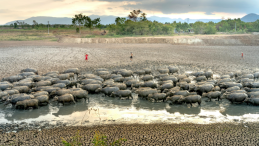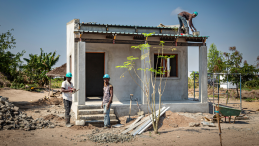As climate change in some places increasingly drives the need for relocation, the impacts on people’s lives extend far beyond the act of moving. A new article in Nature’s Communications Earth & Environment, co-authored by UNU-EHS experts Ann-Christine Link and Dr. Robert Oakes, examines how partial relocation affects subjective well-being over time.
During partial relocation, only some members of a community move to a new location. The study draws on in-depth fieldwork in two communities in Fiji, Vidawa and Denimanu. Vidawa is currently undergoing partial relocation, whereas the community of Denimanu moved ten years earlier. The article’s findings reveal how individuals perceive the impact of relocation on their lives, and show that both those who moved and those who remained continue to experience significant and lasting effects. These effects are often influenced by disrupted social connections, changes in access to land and differing expectations about what relocation would achieve.
“Even ten years later, relocation remains a deeply influential factor in how people evaluate their well-being,” said lead author and UNU-EHS researcher Ann-Christine Link. “These are not one-time events. They are processes with long-lasting personal and communal consequences.”
Another finding that stands out is that partial-relocations can have positive outcomes for those who stay and those who move if communities were actively involved in decision-making process.
Dr. Robert Oakes, co-author and senior researcher at UNU-EHS, emphasized the importance of listening to diverse experiences in shaping future relocation strategies. “This study shows that it's important to understand how both movers and stayers experience relocation. Their stories can help guide future relocation efforts to better reflect the needs and realities of the people involved.”
The full article is available here.





